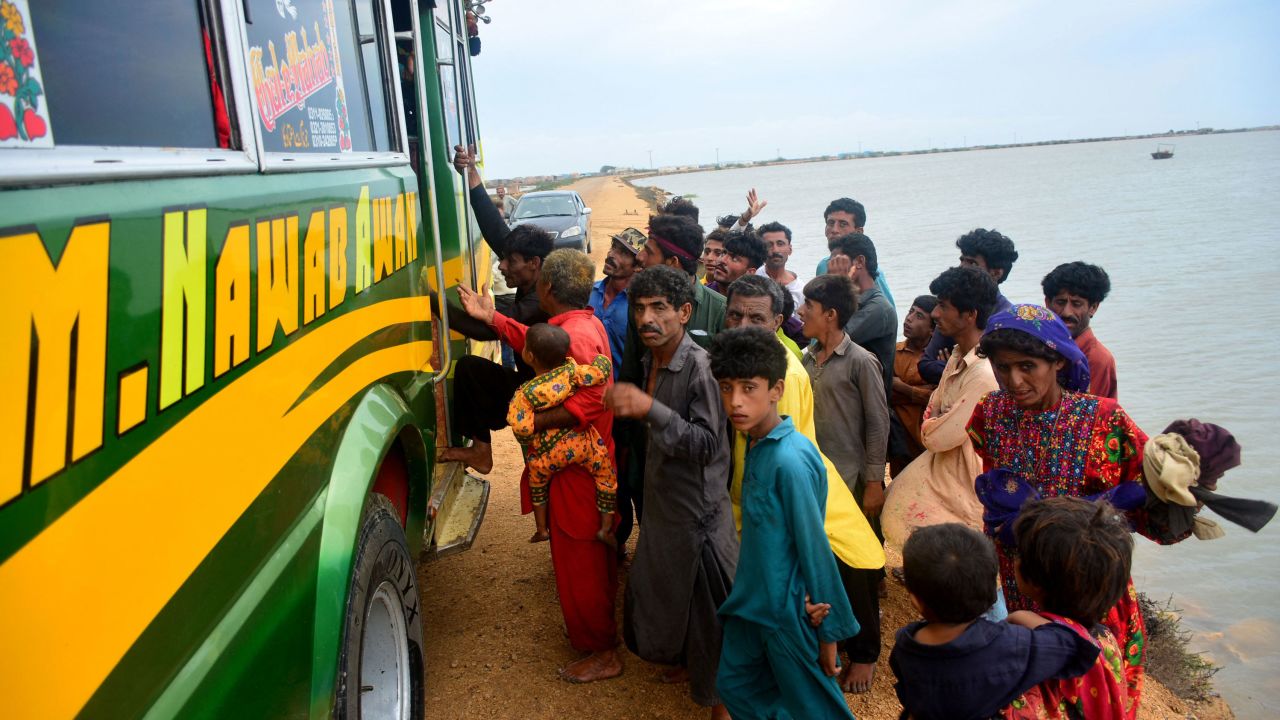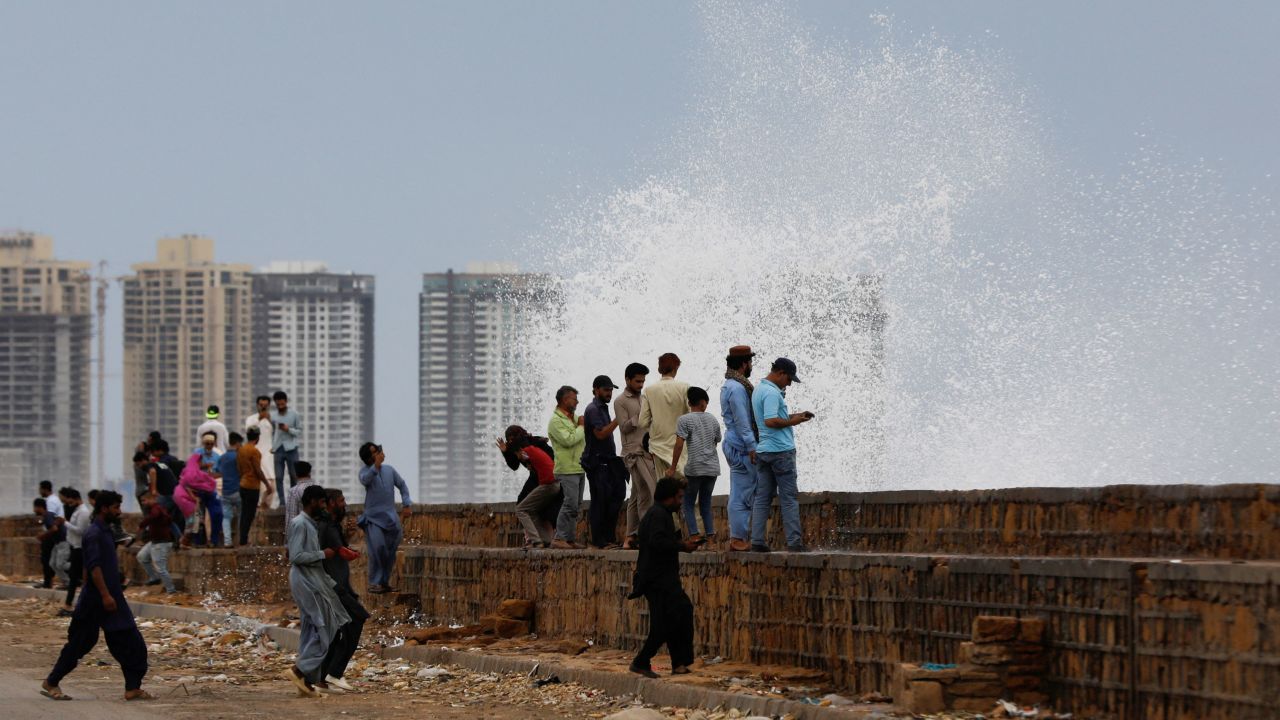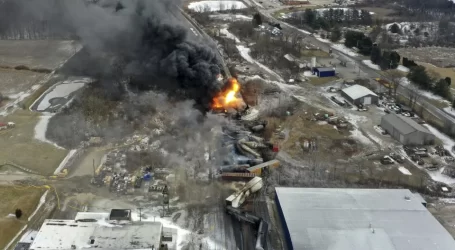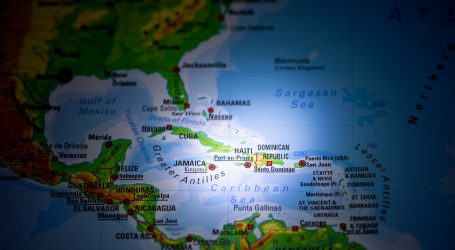Tens of thousands evacuated as India and Pakistan brace for Cyclone Biparjoy

Tens of thousands of people are being evacuated as India and Pakistan brace for the impact of Cyclone Biparjoy, which is expected to make landfall in densely populated areas across the subcontinent Thursday, putting millions of lives at risk.
Biparjoy has been churning across the northeastern Arabian Sea, heading toward southern Pakistan and western India since late last week, with winds of 160 kph (100 mph) and gusts up to 195 kph (121 mph). It has weakened slightly since Tuesday, sustaining winds of 150 kph (90 mph), equivalent to a Category 1 hurricane.
Landfall is expected Thursday afternoon local time, bringing the triple threat of heavy rain, damaging winds and coastal storm surges across the region, according to the India Meteorological Department.
Mass evacuations have started in Pakistan’s Sindh province, with about 60,000 people sent to temporary shelters, according to local authorities.
The provincial capital Karachi – Pakistan’s largest city, with a population of 22 million – has shut malls and businesses along the coast.

Pakistan’s national carrier, PIA, has implemented a string of precautionary measures, including operating round-the-clock security to minimize any potential hazard to lives or equipment.
In India’s Gujarat state, more than 8,000 people have been evacuated from coastal areas, according to the state’s health minister. Livestock have also been moved to higher ground, he said, adding some schools have been ordered to shut and fishing suspended.
Heavy rainfall warnings are in place over the northern Gujarat region, where total rainfall may reach 10 inches, leading to flash flooding and landslides.
In neighboring Maharashtra state, home to about 27 million people and a sizable fishing community, strong winds are expected to hit parts of the financial capital Mumbai. High waves slammed into coastal roads this week, turning roads into rivers.
Four boys drowned off the coast of Mumbai on Monday, Rashmi Lokhande, a senior disaster official for the regional administrative body, told CNN.
Since the drownings, local authorities have deployed police officers and lifeguards along the beaches to prevent people from going into the sea.
Authorities in both countries have been warning residents to seek shelter and stay safe.
Pakistan’s Climate Change Minister Sherry Rehman has warned against reading too much into the storm’s slight weakening, saying on Twitter “it is highly unpredictable so please do not take it casually.”
A growing threat
Cyclone Biparjoy comes less than one year after record monsoon rain and melting glaciers devastated swathes of Pakistan, claiming the lives of nearly 1,600 people.
On that occasion, the force of the floodwater washed away homes, leaving tens of thousands stranded on the road without food or clean water and vulnerable to waterborne diseases.
An analysis of last year’s floods by the World Weather Attribution initiative found that the climate crisis had played a role. It said that the crisis may have increased the intensity of rainfall by up to 50%, in relation to a five-day downpour that hit the provinces of Sindh and Balochistan.

The analysis also found that the floods were likely a 1-in-100-year event, meaning that there is a 1% chance of similarly heavy rainfall each year.
A study published in 2021 by researchers at the Shenzhen Institute of Meteorological Innovation and the Chinese University of Hong Kong and published in Frontiers in Earth Science, found that tropical cyclones in Asia could have double the destructive power by the end of the century, with scientists saying the human-made climate crisis is already making them stronger.
That year, Tropical Cyclone Tauktae, one of the strongest storms on record, slammed into India’s west coast, killing at least 26 people across five states.
Tropical cyclones are among the most dangerous natural disasters. Over the past 50 years, these cyclones have led to nearly 780,000 deaths and around $1.4 billion worth of economic losses globally, according to the World Meteorological Organization.











